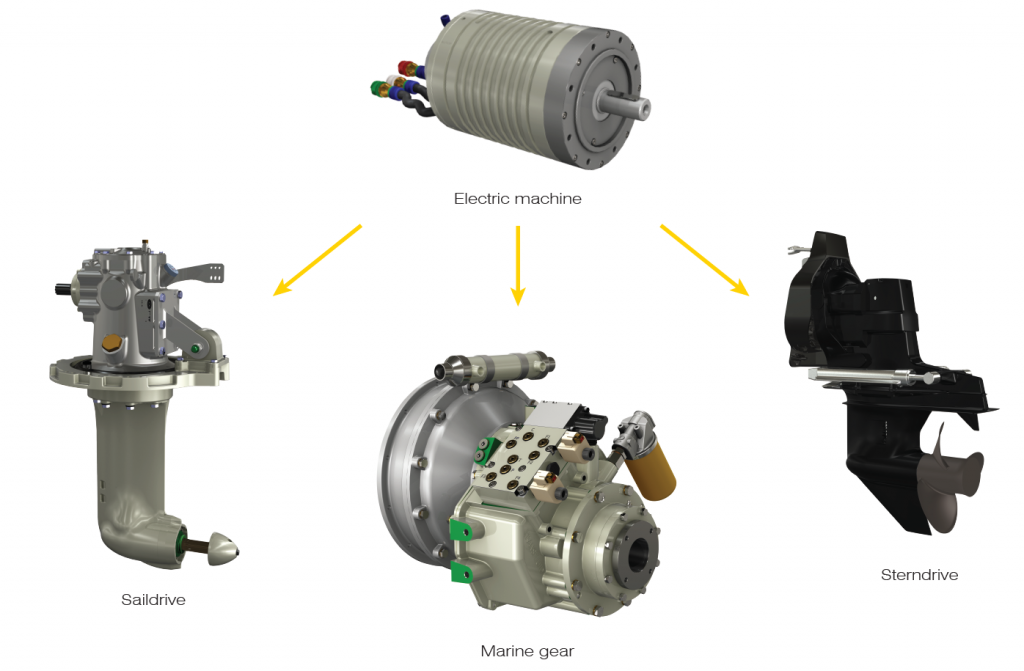Introduction:
The maritime industry plays a crucial role in global trade and transportation. However, its reliance on conventional fossil fuel-based propulsion systems has led to significant environmental concerns, including air and water pollution. The concept of marine electric propulsion offers a promising solution to address these issues and usher in a new era of sustainable maritime transportation.
Understanding Marine Electric Propulsion:
The Basics of Electric Propulsion:
Marine electric propulsion relies on electric motors to generate thrust instead of traditional internal combustion engines. Electric propulsion systems can be fully electric or hybrid, combining electric and conventional systems for improved efficiency.
In today's ever-evolving world, the maritime industry is actively seeking innovative and sustainable solutions to reduce its environmental impact. One of the most significant advancements in this realm is the adoption of marine electric propulsion systems. This transformative technology holds the promise of not only propelling ships efficiently but also contributing to a greener and cleaner maritime future. In this article, we'll delve into the realm of marine electric propulsion, its benefits, challenges, and its potential to revolutionize the way ships navigate the seas.
Advantages over Traditional Propulsion Systems:
Electric propulsion systems offer several advantages, including higher energy efficiency, reduced greenhouse gas emissions, and lower operating costs. By utilizing electric power, ships can achieve smoother acceleration, better maneuverability, and quieter operations.
Key Components of Marine Electric Propulsion:
Electric Motors
Electric motors used in marine propulsion are highly efficient and provide instant torque, enhancing a ship's overall performance. These motors can be placed in various configurations, such as pod propulsion or shaft-line propulsion.
Power Storage Solutions
Batteries are a critical component of marine electric propulsion systems. Advances in battery technology have led to higher energy density and longer operating ranges for electrically powered ships.
Control Systems
Sophisticated control systems manage power distribution, optimize energy consumption, and ensure the seamless integration of electric and conventional propulsion components.
Environmental Benefits of Marine Electric Propulsion:
Reduced Emissions
Marine electric propulsion significantly reduces emissions of pollutants and greenhouse gases, contributing to cleaner air and water in ports and oceans.
Energy Efficiency
Electric propulsion systems are more energy-efficient compared to conventional engines, as they can be fine-tuned to operate at optimal levels throughout a ship's journey.
Noise Reduction
Electric motors operate more quietly than traditional engines, minimizing noise pollution and its impact on marine life.
Challenges and Considerations:
Battery Technology Limitations
While battery technology has improved, challenges such as limited energy density and charging times still need to be addressed for long-distance voyages.
Infrastructure for Charging and Maintenance:
Establishing a global network of charging stations and maintenance facilities is crucial for the widespread adoption of marine electric propulsion.
Initial Investment and Retrofitting Challenges:
Converting existing vessels to electric propulsion systems involves significant upfront costs, deterring some shipowners from making the transition.
Innovations and Trends in Marine Propulsion:
Hybrid Propulsion Systems
Hybrid systems, combining electric and conventional propulsion, offer flexibility and can significantly enhance fuel efficiency.
Integration of Renewable Energy Sources:
Solar and wind energy integration with electric propulsion systems can extend vessel ranges and reduce reliance on shore-based charging.
Real-world Applications:
Electric Cargo Ships
Cargo ships equipped with electric propulsion are poised to revolutionize maritime freight transport by reducing emissions and operating costs.
Passenger Vessels
Luxury cruise liners and ferries are adopting electric propulsion for a quieter and more enjoyable passenger experience.
Research and Exploration Vessels
Electric propulsion enables research vessels to operate silently, preserving marine ecosystems during scientific expeditions.
The Economic Viability of Marine Electric Propulsion:
Investments in electric propulsion technology can lead to long-term savings through reduced fuel consumption and maintenance expenses.
Regulations and International Initiatives:
Global regulations and incentives are shaping the adoption of cleaner marine propulsion technologies, driving the shift towards electric systems.
The Path Forward for Marine Electric Propulsion:
As technology advances and infrastructure improves, marine electric propulsion will likely become the standard for sustainable maritime transportation.
Conclusion:
Marine electric propulsion stands as a beacon of hope for a greener and more sustainable maritime industry. With its potential to reduce emissions, lower operational costs, and revolutionize ship design, this technology represents a transformative shift towards a cleaner future for our oceans and the global shipping sector.


